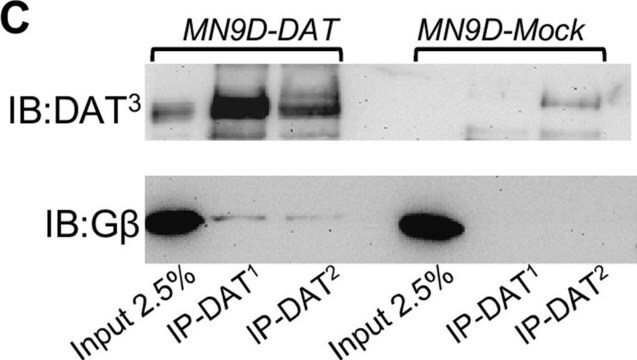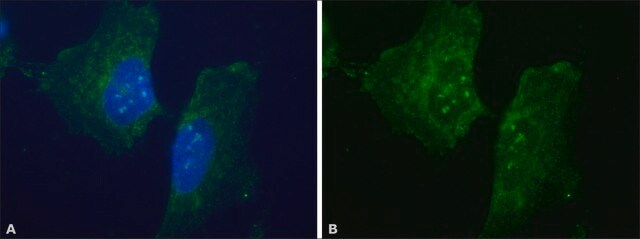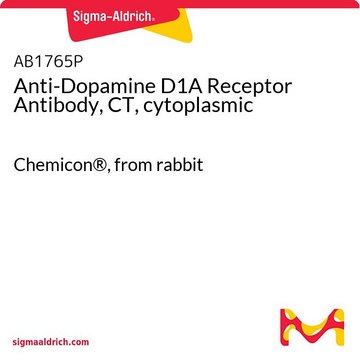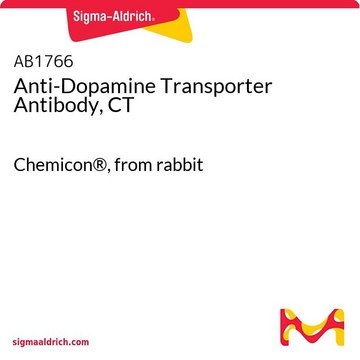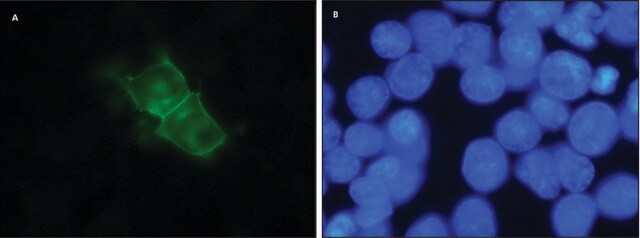AB1591P
Anti-Dopamine Transporter Antibody
Chemicon®, from rabbit
Synonym(s):
DAT
About This Item
Recommended Products
biological source
rabbit
Quality Level
antibody form
affinity isolated antibody
antibody product type
primary antibodies
clone
polyclonal
purified by
affinity chromatography
species reactivity
rat, mouse
manufacturer/tradename
Chemicon®
technique(s)
ELISA: suitable
immunohistochemistry: suitable
immunoprecipitation (IP): suitable
western blot: suitable
NCBI accession no.
UniProt accession no.
shipped in
dry ice
target post-translational modification
unmodified
Gene Information
human ... SLC6A3(6531)
General description
Specificity
Immunogen
Application
Immunoprecipitation: 2-10 μg of antibody (Chang et al., 2001)
Immunohistochemistry: 1:250-1:500 on frozen sections of tissues fixed with 4% paraformaldehyde (Chang et al., 2001; Ourednik, et al., 2002). 0.05% trypsin for 10-15min has been found effective in exposing the epitope in some preparations.
ELISA: 0.5-1.0 μg/mL using 1 μg/mL of DAT control peptide (Catalog Number AG296) per well.
Optimal working dilutions must be determined by end user.
Target description
Other Notes
Legal Information
Not finding the right product?
Try our Product Selector Tool.
recommended
Storage Class Code
10 - Combustible liquids
WGK
WGK 2
Flash Point(F)
Not applicable
Flash Point(C)
Not applicable
Certificates of Analysis (COA)
Search for Certificates of Analysis (COA) by entering the products Lot/Batch Number. Lot and Batch Numbers can be found on a product’s label following the words ‘Lot’ or ‘Batch’.
Already Own This Product?
Find documentation for the products that you have recently purchased in the Document Library.
Our team of scientists has experience in all areas of research including Life Science, Material Science, Chemical Synthesis, Chromatography, Analytical and many others.
Contact Technical Service